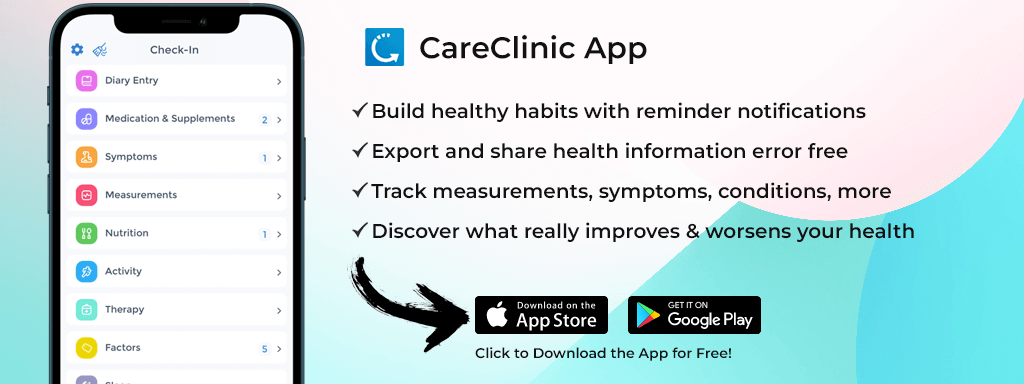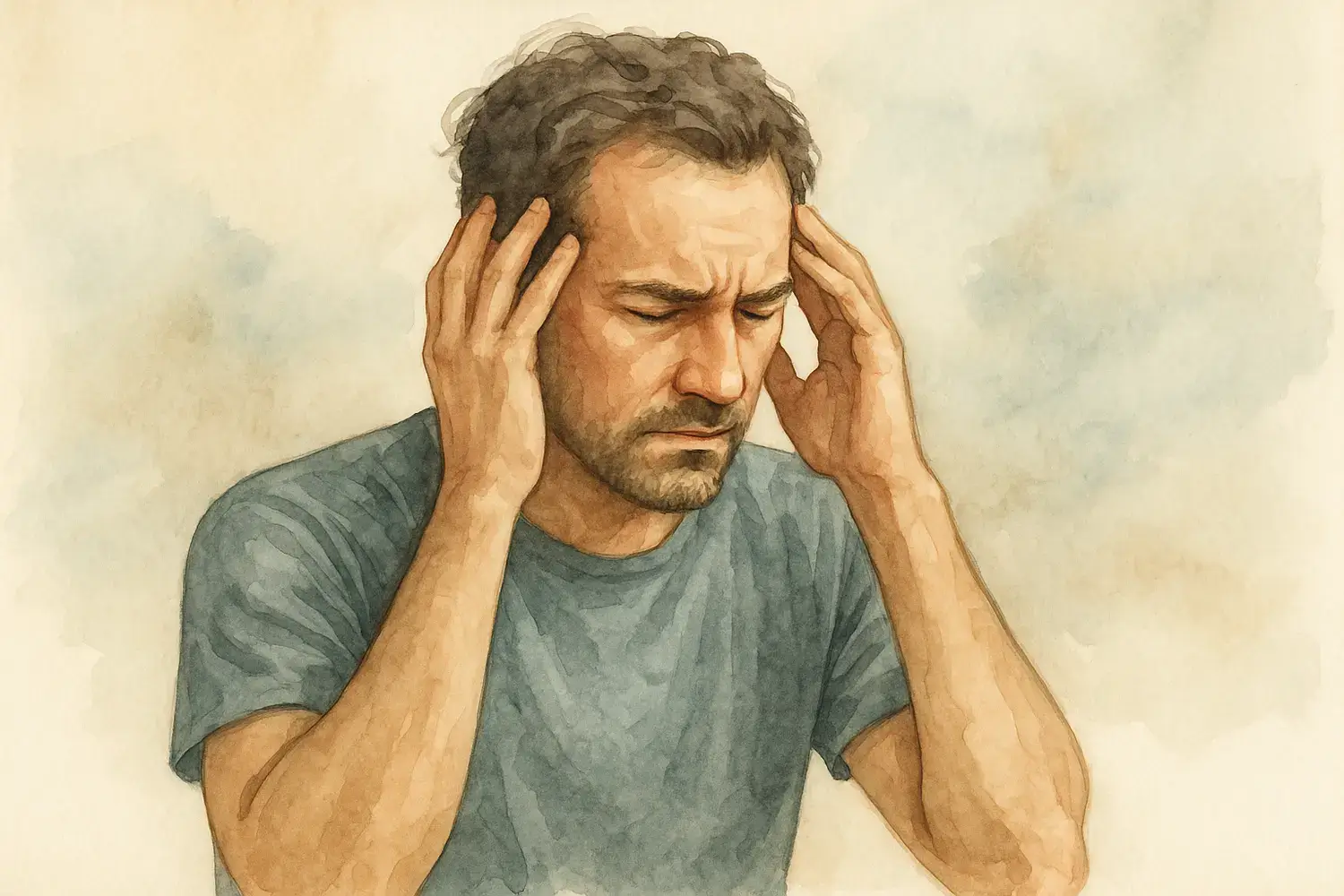
PTSD triggers appear without warning, turning ordinary moments into emotional storms. Tracking these triggers and your coping responses reveals patterns that help you regain control. The CareClinic App turns scattered experiences into organized data that guides your healing journey, helping you identify trigger patterns and develop effective coping strategies.
![]()
Quick Takeaways
- Track triggers immediately after stabilization – Document intensity (1-10), location, time, and coping effectiveness within 2-4 hours of the trigger event for accurate data collection and pattern recognition.
- Use multiple CareClinic trackers together – Combine mood tracking, symptom logging, and diary entries to capture 360-degree view of PTSD episodes, enabling correlation analysis between 15+ different trigger types and recovery patterns.
- Build personalized coping hierarchy through effectiveness ratings – Rate each coping strategy 1-10 after use to identify which techniques work best for specific trigger categories, creating evidence-based response protocols over 2-4 weeks.
Understanding trigger patterns is essential for PTSD recovery. Regular trigger tracking helps reduce symptom severity when combined with therapy. The key lies in documenting not just what triggers you, but when, where, and how you respond. Before starting your tracking journey, consider taking a PTSD assessment to establish your baseline symptoms.
Table of Contents
- Why Track PTSD Triggers and Coping Strategies?
- How Do I Set Up PTSD Trigger Tracking in CareClinic?
- What Information Should I Track for Each Trigger Event?
- How Do I Track Which Coping Strategies Work Best?
- Can I Track Therapy Progress and Homework?
- How Do I Identify Patterns in My PTSD Triggers?
- What Should I Do During a PTSD Crisis?
- How Can Caregivers Use CareClinic for PTSD Support?
- Clinical Quiz: Test Your PTSD Tracking Knowledge
- Your 30-Day PTSD Tracking Challenge
- Troubleshooting Common PTSD Tracking Issues
- Take Control of Your PTSD Recovery Today
Why Track PTSD Triggers and Coping Strategies?
Your nervous system during a trigger responds as if danger is present right now. Logic disappears, replaced by survival instincts. But tracking reveals the truth: most triggers link to past events, not current threats. The CareClinic App creates a bridge between your triggered state and rational understanding.
Therapists need specific information to help effectively. Saying “crowds trigger me” provides less insight than “grocery stores between 5-7 PM trigger hypervigilance, rated 8/10, lasting 45 minutes, managed by grounding exercises.” This precision comes from consistent tracking.
Benefits of PTSD Trigger Tracking
- Pattern Recognition: Identify specific environments, sounds, or situations that activate symptoms
- Coping Effectiveness: Track which strategies work best for different trigger types
- Progress Monitoring: See concrete evidence of reduced trigger intensity over time
- Therapy Support: Provide therapists with detailed data for targeted treatment
- Safety Planning: Develop personalized crisis plans based on your patterns
How Do I Set Up PTSD Trigger Tracking in CareClinic?
The CareClinic App provides multiple tracking tools that work together for complete PTSD management. The setup process takes about 10 minutes and creates a personalized tracking system.
Step 1: Configure Your Mood Tracker
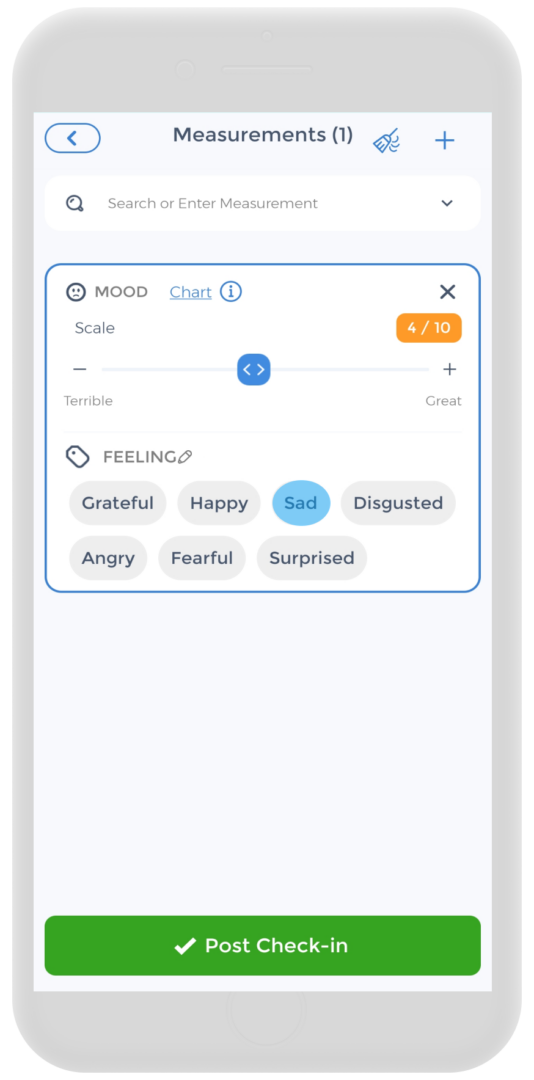
Navigate to the Mood Tracker and enable multiple daily entries. PTSD symptoms fluctuate dramatically, so capturing these variations is crucial. Set reminders for morning, afternoon, and evening mood checks, plus additional entries after trigger events.
For complete tracking, use CareClinic’s symptom tracking template alongside mood monitoring for medical-grade assessment. Rate your baseline mood when calm, then track changes during and after triggers. This data reveals your emotional recovery timeline.
Step 2: Create Custom Symptom Categories
![]()
In the Symptom Tracker, create specific entries for PTSD symptoms:
- Hypervigilance: Rate alertness level from 1-10
- Flashbacks: Track frequency and duration
- Dissociation: Note severity and grounding effectiveness
- Nightmares: Record content themes and sleep disruption
- Avoidance: Document what you avoided and why
- Physical Symptoms: Track heart rate, sweating, trembling
Enable the notes feature for each symptom to add context about triggers and coping attempts.
What Information Should I Track for Each Trigger Event?
Effective trigger tracking requires capturing multiple data points immediately after stabilization. The more detailed your records, the clearer your trigger patterns become.
Essential Trigger Data Points
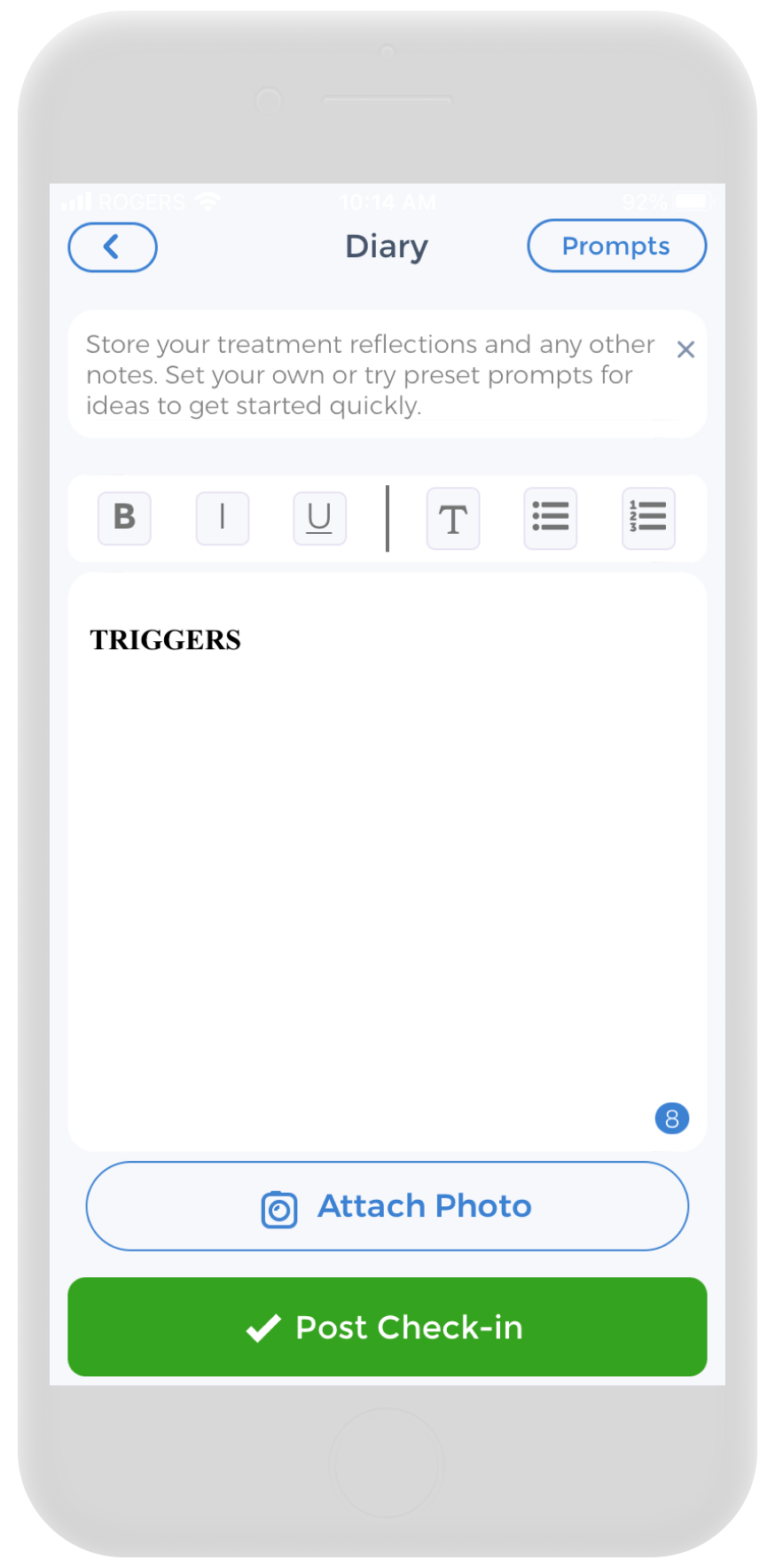
- Trigger Type: Visual, auditory, olfactory, situational, or anniversary
- Intensity Level: Rate the trigger strength from 1-10
- Physical Location: Where the trigger occurred
- Time of Day: Morning, afternoon, evening patterns
- Physical Sensations: Body responses during the trigger
- Emotional Response: Fear, anger, sadness, or numbness
- Duration: How long symptoms lasted
- Coping Used: What strategies you attempted
- Effectiveness: How well coping strategies worked
Use CareClinic’s diary feature to write detailed descriptions while memories remain fresh. Include sensory details that might reveal trigger patterns.
Real-World Tracking Examples
Scenario 1: Unexpected Sound Trigger
At 2:47 PM, a car backfire was heard while walking downtown. The trigger intensity was rated 9/10. Physical symptoms included racing heart (estimated 130 bpm), sweating, and crouched posture. Flashback lasted 3 minutes. Grounding technique (5-4-3-2-1) was used, reducing symptoms to 4/10 within 10 minutes. Full baseline recovery took 35 minutes. Note added: “Similar to combat sounds, need to practice response.”
Scenario 2: Crowded Space Trigger
During 6:15 PM grocery shopping, overwhelming hypervigilance was experienced in the cereal aisle. Severity logged as 7/10. Exit strategy was implemented immediately. In parking lot, breathing exercises were performed for 8 minutes. Symptoms decreased to manageable 3/10. Shopping was completed at 9 PM when store was less crowded. Pattern identified: peak hours consistently trigger hypervigilance.
Scenario 3: Anniversary Date Trigger
On trauma anniversary date, anticipatory anxiety was tracked starting three days prior. Preventive coping plan was activated: therapy session scheduled, support person notified, self-care activities planned. Day-of symptoms peaked at 6/10 (versus 10/10 previous year). Progress was documented showing improved anniversary management.
How Do I Track Which Coping Strategies Work Best?
Not all coping strategies work equally for every trigger type. The CareClinic App helps you build a personalized toolkit based on real effectiveness data.
Setting Up Coping Strategy Tracking
![]()
Create a Therapy session for each coping category:
- Grounding Techniques: 5-4-3-2-1, ice cubes, strong scents
- Breathing Exercises: Box breathing, 4-7-8 technique
- Movement: Walking, stretching, bilateral stimulation
- Cognitive Strategies: Thought stopping, reality testing
- Social Support: Calling someone, attending groups
After using any strategy, rate its effectiveness from 1-10. Add notes about what specifically helped or didn’t work.
Building Your Coping Hierarchy
Over time, CareClinic’s data reveals which strategies work best for specific triggers. You might discover that breathing exercises excel for anxiety but grounding techniques work better for dissociation. This personalized hierarchy guides future coping choices.
Can I Track Therapy Progress and Homework?
PTSD treatment often includes specific therapy homework. The CareClinic App tracks both session insights and between-session practice.
Therapy Session Documentation
![]()
Create recurring therapy appointments in the app. After each session, document:
- Key insights or breakthroughs
- Homework assignments given
- New coping strategies learned
- Topics to revisit next session
Use voice-to-text features for quick documentation immediately after sessions while details remain clear.
Homework Tracking
Set up therapy homework as daily activities. Common PTSD therapy homework includes:
- Exposure exercises with fear ratings
- Cognitive restructuring worksheets
- Relaxation practice logs
- Trauma narrative writing
Track completion and effectiveness daily. This data helps therapists adjust treatment pacing.
How Do I Identify Patterns in My PTSD Triggers?
After 2-4 weeks of consistent tracking, patterns emerge. CareClinic’s reporting features reveal connections you might miss in daily life.
Common Patterns to Watch For
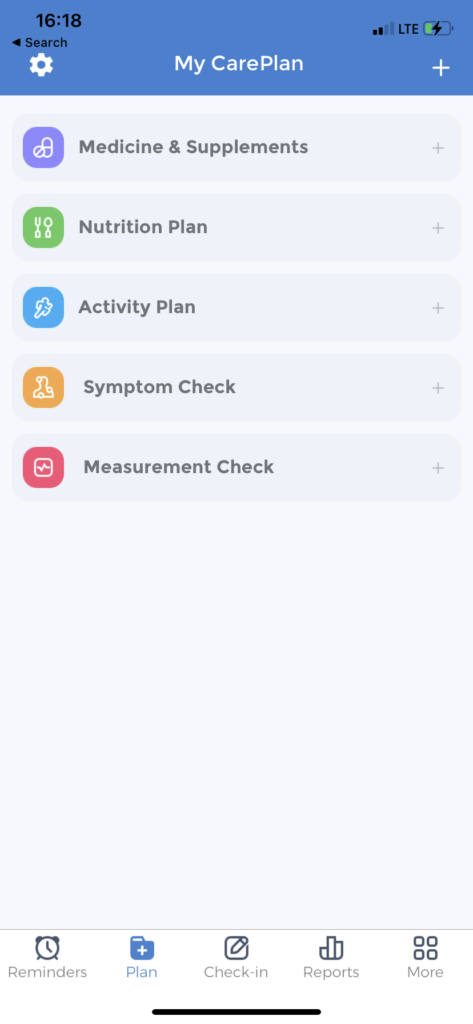
- Time Patterns: Symptoms worse at night or specific times
- Location Patterns: Certain places consistently trigger symptoms
- Social Patterns: Crowds versus isolation triggers
- Sensory Patterns: Specific sounds, smells, or sights
- Physical Patterns: Fatigue or hunger increasing vulnerability
The correlation feature shows how factors interact. You might discover that poor sleep plus crowded spaces equal guaranteed triggers, while good sleep provides resilience.
What Should I Do During a PTSD Crisis?
Crisis moments require immediate access to your safety plan. CareClinic stores this information for quick retrieval.
Creating Your Crisis Plan
In the app’s notes section, create a crisis plan including:
- Warning signs of escalating symptoms
- Immediate coping strategies that work
- Safe people to contact with phone numbers
- Therapist crisis contact information
- Nearest emergency room location
- Medications and dosages if applicable
Review and update this plan monthly based on tracking insights.
How Can Caregivers Use CareClinic for PTSD Support?
PTSD affects entire families. CareClinic’s caregiver features enable coordinated support while respecting privacy.
Setting Up Caregiver Access

Grant specific permissions to trusted supporters. For those managing both PTSD and mood disorders, the bipolar mood tracking system provides additional journaling techniques that work well for trauma recovery.
- View mood and symptom trends
- Receive crisis alerts if symptoms escalate
- See medication adherence (if applicable)
- Add observations about triggers or symptoms
Caregivers can document observations about triggers you might not remember during dissociation or severe symptoms.
Clinical Quiz: Test Your PTSD Tracking Knowledge
Question 1: How soon after a trigger event should you document it in CareClinic?
A) Within 24 hours
B) As soon as you’re stable enough
C) During your evening check-in
D) Only if it was severe
Question 2: What’s the most important data point to track for each trigger?
A) Time of day
B) Trigger intensity and coping effectiveness
C) Physical location
D) Who was present
Question 3: How long should you track before looking for patterns?
A) 1 week
B) 2-4 weeks
C) 3 months
D) 6 months
Answers: 1-B, 2-B, 3-B
Your 30-Day PTSD Tracking Challenge
Week 1: Set up basic mood and symptom tracking
Week 2: Add trigger documentation and coping ratings
Week 3: Include therapy homework and session notes
Week 4: Review patterns and adjust tracking methods
Success Criteria:
- Track mood at least twice daily
- Document all significant triggers with intensity ratings
- Rate coping strategy effectiveness for each use
- Complete weekly pattern review in reports section
Reward: Share your tracking insights with your therapist and celebrate taking control of your recovery journey!
Troubleshooting Common PTSD Tracking Issues
Problem: Forgetting to track during intense triggers
Solution: Pre-filled templates are created in CareClinic for common trigger types. Quick-entry options are enabled for crisis moments. Voice recordings are converted to entries later when stability is regained.
Problem: Feeling overwhelmed by tracking requirements
Solution: Minimal tracking is started with just mood ratings twice daily. One symptom category is added per week. Complexity is increased gradually as comfort with tracking develops.
Problem: Not seeing patterns despite consistent tracking
Solution: Reports are reviewed with a therapist who can identify subtle connections. Different time ranges are examined (weekly vs monthly views). Environmental factors like weather or work stress are considered in correlation features.
Take Control of Your PTSD Recovery Today
PTSD tricks you into believing you’re permanently broken. But tracking proves otherwise. Every documented trigger that doesn’t escalate, every coping strategy that works, every pattern identified – these are victories. The CareClinic App turns overwhelming experiences into manageable data.
Your tracking becomes a roadmap to recovery. Therapists can target specific triggers. You can prepare for challenging situations. Supporters can provide informed help. Most importantly, you can see your progress when PTSD tries to convince you there is none. Export your tracking data as PDF reports for therapy sessions or CSV files for detailed analysis.
Recovery from PTSD requires courage, consistency, and the right tools. CareClinic provides a complete tracking system that grows with your healing journey. Download the CareClinic App today and start documenting your path from survivor to thriver.
Remember: Healing isn’t linear, but progress is trackable. Every entry you make is an act of self-care and rebellion against PTSD’s chaos. Your future self will thank you for starting this tracking journey today.

